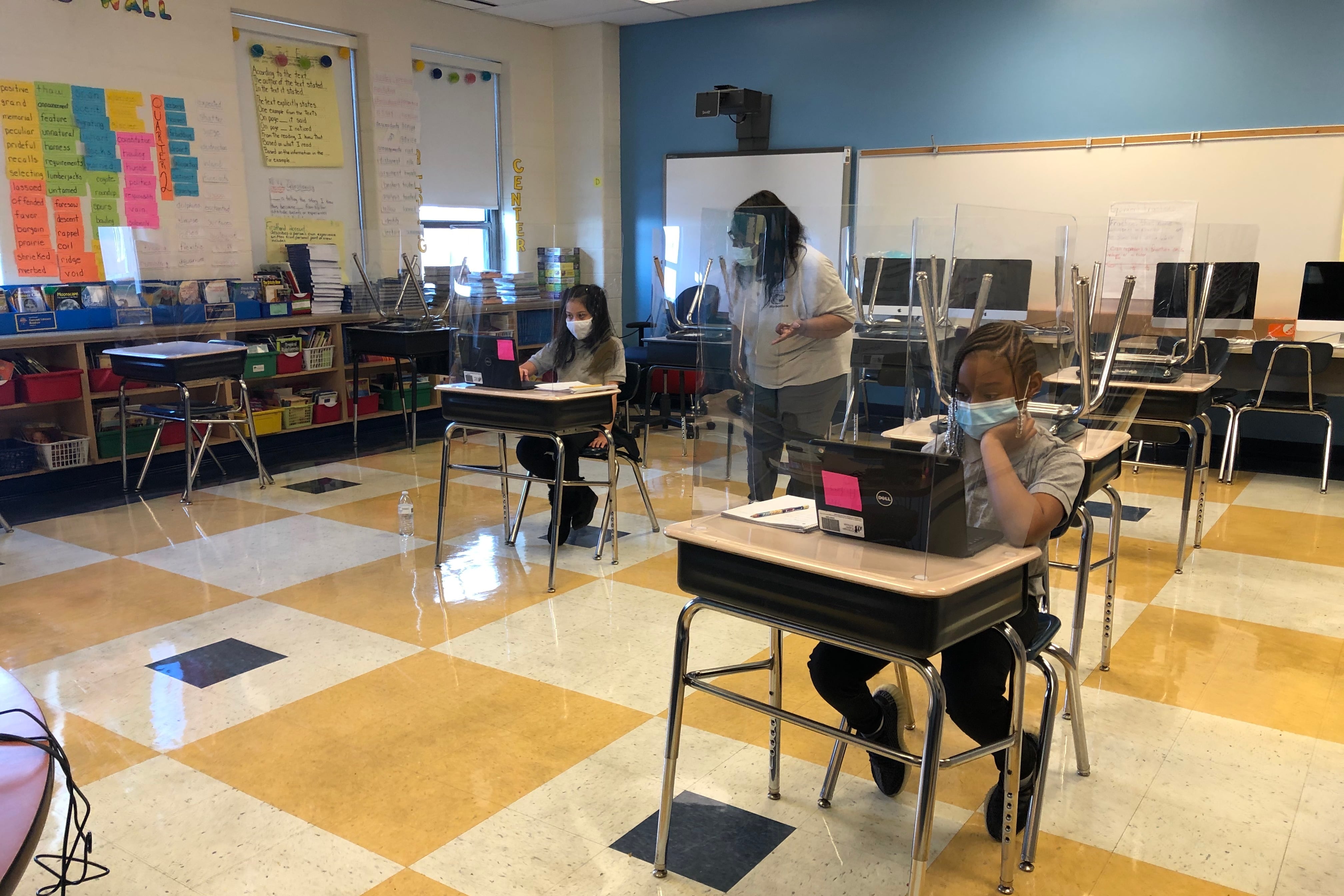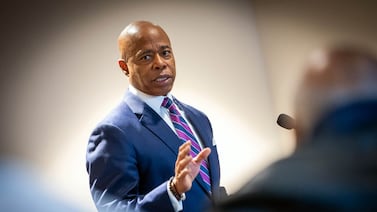Fewer Chicago school employees are leaving the district amid the pandemic, easing at least for now fears of a major educator exodus driven by the pressures of the outbreak and tensions over employee safety.
At the end of 2020-21, resignations in Chicago Public Schools declined over the previous year, continuing a recent trend of steady decreases. The district saw a 25% jump in retirements, but because of recent sharp declines, those numbers remained well below pre-pandemic levels, according to data obtained by Chalkbeat.
New data the district released Friday also shows its efforts to reduce teacher vacancies and hire more Black and brown educators are paying off. In a press release, the district touted kicking off the school year with almost 97% of teaching positions filled, though that rate dipped slightly over last year.
The district did see major gains in hiring for tough-to-fill special education teaching jobs and in increasing the portion of Black and Latino new teacher hires, from about 30% in 2019 to more than 45% today.
A confluence of factors likely explains why school employees have largely stayed put in Chicago and nationally, even as surveys have suggested many educators contemplated quitting last year. Officials and educators cited the lingering economic uncertainty, recent district retention efforts, and Chicago’s “golden handcuffs,” as one teacher put it — the better pay and benefits compared to suburban districts.
“A lot of people feared a big uptick,” said Matt Lyons, the district’s chief talent officer. “Frankly, that’s what I feared as well but didn’t see materialize. We are in a pretty good place.”
But officials said they are watching the retirement trends and the departure numbers overall more closely than ever.
The district did see a slight rise in resignations in August, Lyons said, likely tied at least in part to delta variant concerns and a new vaccination mandate. Staffing educators and support personnel remains a leading preoccupation for the district’s school leaders amid a major substitute teacher shortage that leaves little wiggle room when educators can’t report to work, said Troy LaRaviere of the district’s principals group.
More employee stability
Christa Valencia, a special education teacher who works with deaf and hard of hearing students, says she thought about resigning almost every day last school year. The months leading up to the district’s reopening of elementary schools in March were the hardest.
By then, she had fallen into a rhythm working virtually with her students, and their progress sustained her. But serving as a member of her South Side school’s professional problems committee — tasked with planning and troubleshooting ahead of that spring’s partial reopening — was increasingly stressful, she said. She saw morale at her school take “a nosedive” as anxiety over safety and tensions between the district and teachers union rose.
Still, as spring came, “I was so exhausted at the end that I couldn’t even fathom looking for another job. I needed time to rest and heal.”
Throughout the 2020-21 fiscal year, about 1,330 district employees resigned, down 8% over the previous year and 37% over 2018-19. In addition, 536 employees retired, up from the previous year, but down 33% over 2018-19. The retirements represented fewer than 1.5% of employees overall. The district employs about 38,600 people, including 20,430 teachers.
Those trends were largely consistent across employee groups. Retirements increased slightly more for teachers, while resignations decreased more among principals and assistant principals. As in previous years, the district offered employees a $500 bonus and benefits through the summer to resign in the spring rather than waiting until the cusp of the following school year. But relatively few staffers took it up on that offer.
The district will not make 2020-21 retention data by race available until November, but it says that leading up to that year, its racial gap in turnover has shrunk to less than 5% between Latino educators, who are the least likely to leave, and Black colleagues, with the highest turnover. Based on the latest district data, 42% of district teachers now are Black or Latino, more than in any year in the past decade.
The district started out the year with about 4,490 special education teachers, a 20% increase over 2018-19.
District officials say some credit for the relative stability should go to a recent recruitment and retention push, including the program Teach Chicago, launched in 2017 to make employment offers to qualified candidates before specific jobs open and help general education teachers get special education teaching licenses. The district also points to employee compensation increases in recent years and its improved financial stability overall — as well as circumstances outside the district’s control.
“Last year, people weren’t moving,” said Lyons. “Spouses and partners started new jobs, but they didn’t have to relocate. Life decisions people make are largely on hold because of the pandemic.”
Valencia knows some educators who left last spring, but she believes others felt the exhaustion that kept her from job-hunting and stayed put. Then, there are the district’s competitive pay and benefits. She knows of a teacher who before the pandemic took an almost $20,000-a-year pay cut to take a suburban teaching job. But for most teachers, Valencia said, “Financially, it doesn’t feel like a choice to leave CPS.”
The starting salary for a first-year teacher with a bachelor’s degree in CPS is $57,869 this fall, while the salary for a veteran with 20 years experience and a master’s degree is $98,150.
A national trend
Across Illinois, the teacher retirement outlook appears to have stabilized as well, after a marked spike during the summer of 2020 that made headlines. After jumping to about 3,700 retirements for the period between January and July 2020, those numbers dipped again during the same period in 2021, to about 3,490, in line with 2019 data.
Like Chicago, Illinois has seen teacher retirements decline steadily since the mid-2010s. Recent numbers remain well below those in 2016, when an early retirement option in Illinois expired, and a financial penalty kicked in for any educator who retires before age 60 and has fewer than 35 years of experience.
Districts across the state and the country have been rocked by a bus driver shortage that in Chicago left more than 2,000 students without a ride to school on the first day of school.
Chad Aldeman of Georgetown University’s Edunomics Lab says the school retention picture appears stable nationally as well. According to data through May from the Bureau of Labor Statistics that lumps together public schools and higher education campuses, resignations, retirements, and layoffs are all down in that sector. That’s significant because teacher turnover is highly disruptive to school communities and costly to districts.
Retirements in particular appear poised to remain stable, Aldeman says: Demographic data suggests not many teachers are on the cusp of retirement, and they are unlikely to retire before they are eligible and suffer financial penalties.
Valencia, the Chicago special education teacher, is slated to leave the district next winter after her husband got a job on the West Coast and the family decided to move. But she started the school year working with the same group of students from last year — and a can-do attitude.
“After last year, I feel I can handle anything now,” she said. “We’ve learned so much. We’ve grown so much.”








